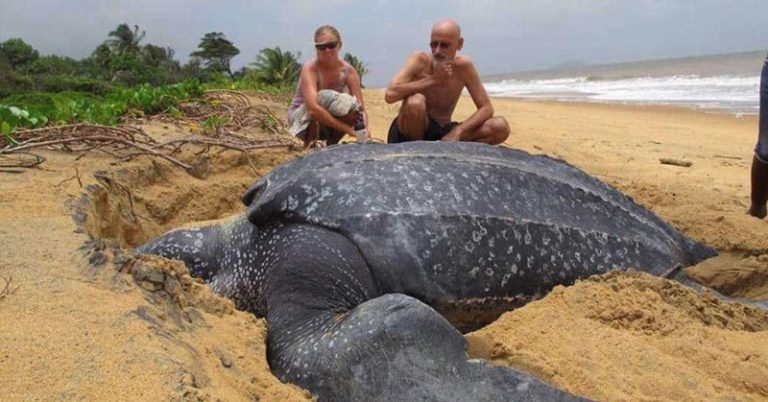Turtles are some of the most interesting yet elusive creatures on our planet. Currently, there are 356 known species of turtles that exist, but only seven known species of sea turtles [1].
The largest of these species is the Leatherback sea turtle, whose evolutionary roots go back more than 100 million years, is one of the only species that coexisted with the dinosaurs [2].
Leatherback Sea Turtles
While many species of turtles have hard, bony shells, the leatherback sea turtle has a flexible, rubber or leather-like covering, hence the name. It has a teardrop shape, and is bluish-black in color, with white splotches speckled across it. The shell’s ridges allow it to dive deeper than any other turtle- up to 4200 feet– where it can remain for up to 85 minutes [3].
Leatherback turtles are the largest known turtles on Earth, and those that live in the Atlantic ocean near Canada can have a shell that measures up to 1.5 meters in length and have an average weight of 400 kilograms (more than 880 pounds) [2].
Where do they Live?
The leatherback sea turtle is usually found in the temperate, subtropical, and tropical waters of the Atlantic, Pacific, and Indian oceans. They typically nest on tropical and subtropical beaches, but they feed in temperate waters, so they travel approximately 18 thousand kilometers (over 11 thousand miles) between these areas every year.
During the summer, the largest population of leatherback turtles can be found in Atlantic Canada, where there is an abundance of jellyfish, which are their main prey. They will not, however, ever come ashore in Canada, as they will only leave the water to nest on tropical and subtropical beaches [2].
These turtles have a unique ability to generate and maintain body heat, which allows them to swim in the colder waters of the North Atlantic, unlike other turtle species [3].
Threats to Leatherbacks
The leatherback sea turtle is categorized by the World Wildlife Fund (WWF) as a vulnerable species. This means that they are facing a high level of extinction in the wild [4].
Due to overharvesting and interactions with fisheries, their populations in the Pacific ocean have declined over the last twenty years. Leatherbacks are more likely to come into contact with fisheries because of their long migration patterns.
Since their primary source of food is jellyfish, leatherbacks are also more likely to mistakenly eat a plastic bag that is floating in the ocean, which can ultimately kill them. Additionally, as water levels rise due to climate change, the beaches where turtles go to nest are gradually disappearing, making it increasingly difficult for them to reproduce [4].
The Largest Sea Turtle in the World
Recently, beach-goers in an unknown location got the rare opportunity to see one of these massive turtles in the wild. The turtle that was spotted emerged from the sea, took a brief rest on the sand, and then returned to the water.
Sightings such as these are incredible examples of how stunning our planet’s wildlife can be, and are consistent reminders of how important it is that we continue to strive to clean up our oceans and our environment to protect our most vulnerable creatures.
Keep Reading: Inside the ‘Absurd’ Plan to Bring the Amazon Rainforest to Europe
Sources
- ‘How Many Species Of Turtles Are There?’ World Atlas
- ‘Search Aquatic Species at Risk’ Government of Canada
- ‘Leatherback Sea Turtle’ National Geopgraphic . Joel Sartore.
- ‘Leatherback Turtle Facts’ World Wildlife Federation

